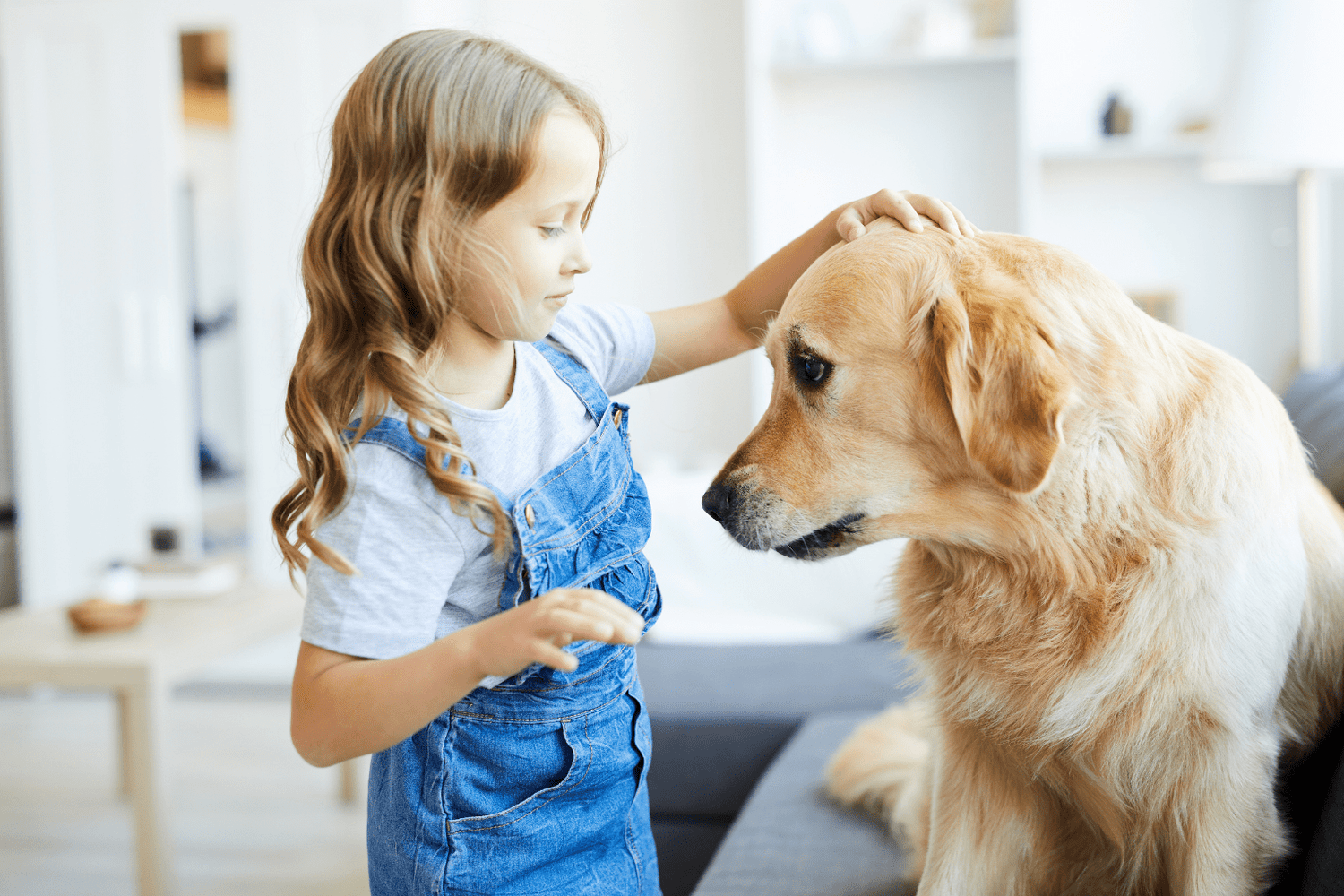Key Takeaways
- Bluey is an Australian Cattle Dog known for its blue-speckled coat.
- The breed is commonly called 'Blue Heeler' due to its distinctive coloring.
- Bluey is celebrated for exceptional herding skills.
- Bluey is considered both a legend and a family favorite.
Table of Contents
- Meet Bluey, A Dog, a Legend, and a Family Favorite
- Bluey in Real Life, The Oldest Verified Dog and Australian Cattle Dog Legacy
- From Farm Fields to Family Rooms, What Makes Australian Cattle Dogs Unique
- Bluey on Screen, The Animated Family Hit and Its Real-World Roots
- How to Identify and Care for a Blue Heeler Like Bluey
- Raising a Happy, Healthy Blue Heeler, Family Life and Longevity Secrets
- Common Blue Heeler Challenges, Troubleshooting Behaviors with Gentle Solutions
- Bluey vs. Other Family Dogs, Is the Blue Heeler Right for You?
- Bluey's Legacy, Celebrating Longevity and Nurturing with Nature
Meet Bluey, A Dog, a Legend, and a Family Favorite
Bluey is more than just a name, it's a symbol of the Australian Cattle Dog's legendary status as both a working companion and a beloved family member. Their intelligence, loyalty, and boundless energy make them stand out among other breeds. For pet parents looking to support their dog's active lifestyle and overall wellness, natural relief solutions can be an excellent addition to daily routines.
Whether on the farm or in the city, Blue Heelers thrive when their physical and mental needs are met. Owners often seek out best selling products that help maintain joint comfort, reduce stress, and promote longevity, key factors in keeping these remarkable dogs happy and healthy.
Bluey in Real Life, The Oldest Verified Dog and Australian Cattle Dog Legacy

The original Bluey lived from 1910 to 1939, achieving the remarkable age of 29 years and 5 months on a cattle station in Rochester, Victoria. This bluey australian cattle dog spent his entire life working alongside his owner, Les Hall, herding sheep and cattle across the Australian outback.
What made Bluey's longevity extraordinary wasn't just genetics, it was his active lifestyle, consistent work purpose, and the natural environment he thrived in. Australian Cattle Dogs like Bluey were bred for endurance, intelligence, and unwavering loyalty, traits that served him well through nearly three decades of farm life. His record remains unbroken, verified by Guinness World Records as the longest-lived dog in documented history.
From Farm Fields to Family Rooms, What Makes Australian Cattle Dogs Unique
Australian Cattle Dogs, whether blue or red heelers, showcase distinctive mottled coats, compact muscular builds, and alert triangular ears. The bluey breed typically weighs 35-50 pounds with boundless energy and razor-sharp intelligence that demands mental stimulation.
| Breed | Energy Level | Coat Pattern | Best Fit |
|---|---|---|---|
| Blue Heeler | Very High | Blue speckled/mottled | Active families, rural homes |
| Red Heeler | Very High | Red speckled/mottled | Working farms, experienced owners |
| Border Collie | High | Various solid colors | Suburban families, dog sports |
| Australian Shepherd | High | Merle patterns, solid colors | Large yards, hiking families |
The term "Bluey" became Australian slang for any blue-coated cattle dog, reflecting their cultural significance in rural communities. These dogs possess an intense herding instinct that translates into nipping at heels, circling family members, and maintaining constant awareness of their "flock", behaviors that require understanding and proper channeling in family settings.
Bluey on Screen, The Animated Family Hit and Its Real-World Roots
The animated Bluey premiered in 2018, created by Joe Brumm who drew inspiration from his own childhood with Blue Heelers and his experiences raising daughters. The show's creators deliberately chose an australian cattle dog bluey to represent the quintessential Australian family dog, energetic, imaginative, and deeply bonded with their pack.
Are the Bluey characters real dog breeds? Yes! Bluey and Bingo are Blue Heelers, while their parents Bandit and Chilli represent the breed's adult characteristics. Other characters showcase different Australian breeds like Rusty (Red Heeler) and Indy (Afghan Hound).
The show's storylines often mirror authentic cattle dog behaviors, Bluey's boundless energy during games like "Keepy Uppy," her natural leadership with Bingo, and the family's outdoor adventures reflect how what type of dog is bluey naturally behaves. The series anthropomorphizes these traits while maintaining the breed's core characteristics: intelligence, playfulness, and strong family bonds.
How to Identify and Care for a Blue Heeler Like Bluey

Recognizing an australian cattle dog bluey involves looking for their signature mottled blue-gray coat with darker patches, compact 35-50 pound frame, and alert, intelligent expression. Their ears stand erect, and they carry themselves with confident, athletic posture that reflects their working heritage.
3 Ways to Spot a Blue Heeler
- Coat Pattern: Blue speckled or mottled appearance with possible tan markings on legs and face
- Body Language: Alert stance, intense eye contact, and tendency to position themselves strategically to observe their surroundings
- Behavior Cues: Natural herding instincts, high energy even when resting, and strong focus on their human family
New Blue Heeler parents should prioritize early socialization, consistent mental stimulation, and establishing clear routines. These dogs thrive with purpose-driven activities and require owners who understand their need for both physical exercise and cognitive challenges. Initial veterinary checkups should focus on hip evaluation, eye health, and establishing a wellness plan that supports their active lifestyle throughout their potentially long lifespan. For more information on joint health, see hip dysplasia in dogs signs and treatments.
Raising a Happy, Healthy Blue Heeler, Family Life and Longevity Secrets
Successfully integrating a bluey dog into family life requires matching their intelligence with engaging activities. Three proven strategies include puzzle-based feeding sessions, structured agility training in the backyard, and interactive fetch games that challenge both speed and problem-solving skills.
Wellness extends beyond exercise to encompass nutrition timing, consistent sleep schedules, and proactive health support. Many Blue Heeler families find success with natural approaches to maintaining joint comfort and managing stress during high-energy periods. Our Walk-Easy® Hip & Joint Pain Relief can provide gentle support for mobility and comfort, helping maintain the vitality that made the original Bluey legendary. If your dog experiences anxiety or restlessness, you may find these tips on how to calm down a stressed dog helpful, and consider our Pet Relax Dog Calming Anxiety Relief for natural stress support.
Blue Heelers can absolutely thrive in urban environments when their cognitive and physical needs are consistently met. The key lies in creative exercise solutions, establishing predictable routines, and recognizing that a tired Blue Heeler mind creates a content family companion. For additional ideas, check out how to exercise dogs indoors.
Common Blue Heeler Challenges, Troubleshooting Behaviors with Gentle Solutions
The most frequent Blue Heeler challenges stem from their working heritage: excessive barking at movement, destructive chewing when understimulated, and heel-nipping during family activities. These behaviors reflect their genetic programming rather than defiance, requiring redirection rather than punishment.
| Challenge | Root Cause | Gentle Solution |
|---|---|---|
| Heel Nipping | Herding instinct | Redirect to appropriate toys, teach "leave it" command |
| Excessive Barking | Alert behavior | Structured quiet training, mental exhaustion activities |
| Destructive Chewing | Boredom, anxiety | Puzzle feeders, rotation of appropriate chew items |
Natural support through our Peaceful Paws remedy can help ease stress-related behaviors and support calm behavior, while Pet Relax may help with restlessness. When behavioral challenges persist despite consistent training, consulting professional trainers familiar with herding breeds ensures both dog and family success.
Bluey vs. Other Family Dogs, Is the Blue Heeler Right for You?

Choosing between a Blue Heeler and other family-friendly breeds depends on lifestyle compatibility and energy management capabilities. What breed is bluey suits families who embrace active lifestyles and appreciate intelligent, loyal companions who require consistent engagement.
| Breed | Energy Level | Exercise Needs | Kid-Friendliness | Training Difficulty | Average Lifespan |
|---|---|---|---|---|---|
| Blue Heeler | Very High | 2+ hours daily | Good with supervision | Moderate to High | 12-16 years |
| Border Collie | Very High | 2+ hours daily | Excellent | Moderate | 12-15 years |
| Labrador Retriever | Moderate to High | 1-2 hours daily | Excellent | Easy | 10-12 years |
| Golden Retriever | Moderate | 1 hour daily | Excellent | Easy | 10-12 years |
Lifestyle Match Assessment
Choose a Blue Heeler if you: Love outdoor adventures, have experience with intelligent breeds, and can commit to daily mental stimulation. Perfect for active families who appreciate a loyal, protective companion.
Consider alternatives if you: Prefer lower-maintenance pets, have very young children, or live in small spaces without yard access.
Blue Heelers excel with families who embrace their working heritage and channel their intelligence productively. Unlike the more universally adaptable Labs and Goldens, bluey dogs require owners who understand herding breed psychology and can provide consistent leadership. For more on Bluey's record and legacy, see Bluey (long-lived dog).
Bluey's Legacy, Celebrating Longevity and Nurturing with Nature
The original Bluey's remarkable 29-year lifespan and today's beloved animated character both celebrate the enduring bond between humans and their canine companions. This legacy reminds us that attentive care, natural wellness approaches, and understanding breed-specific needs contribute to longer, more joyful lives together.
Holistic wellness practices that honor a dog's natural instincts while supporting their physical health create the foundation for exceptional longevity. Whether through homeopathic support for joint comfort, stress management during high-energy periods, or simply recognizing that mental stimulation matters as much as physical exercise, the "Nurture with Nature" philosophy helps every bluey dog thrive. For more background on Bluey's story, visit Bluey (dog).
From record-breaking farm dogs to animated family favorites, Bluey's story continues inspiring pet parents to embrace both the challenges and rewards of life with intelligent, loyal companions. Every healthy day, every playful moment, and every peaceful evening reflects the timeless truth that our pets deserve care as thoughtful and dedicated as the love they give us.
Frequently Asked Questions
What factors contributed to Bluey's extraordinary longevity and how can they be applied to modern Australian Cattle Dogs?
Bluey's remarkable lifespan was supported by an active lifestyle, purposeful work, and a natural environment that kept him engaged and healthy. For modern Australian Cattle Dogs, maintaining regular physical activity, mental stimulation, and a balanced, natural approach to health can help support their longevity and overall well-being.
How do the herding instincts of Blue Heelers influence their behavior in family environments?
Blue Heelers’ strong herding instincts often make them alert, energetic, and highly focused, which can translate into protective and attentive family members. These instincts mean they thrive with consistent mental and physical challenges, and may try to herd children or other pets, so gentle guidance and plenty of exercise are key to a happy home life.
What are the key differences between Blue Heelers and other similar herding breeds like Border Collies and Australian Shepherds?
Blue Heelers are known for their sturdy build, intense loyalty, and a distinctive blue-speckled coat, while Border Collies often excel in agility and problem-solving, and Australian Shepherds are recognized for their versatility and striking coat patterns. Each breed has unique energy levels and training needs, with Blue Heelers often showing a more independent and protective nature.
What are the best practices for caring for a Blue Heeler to ensure their physical and mental well-being?
Caring for a Blue Heeler involves daily exercise to meet their high energy, mental enrichment to satisfy their intelligence, and gentle, natural support for joint and stress management. Providing a balanced routine with social interaction, training, and natural wellness products can help keep these dogs happy, healthy, and thriving throughout their lives.



